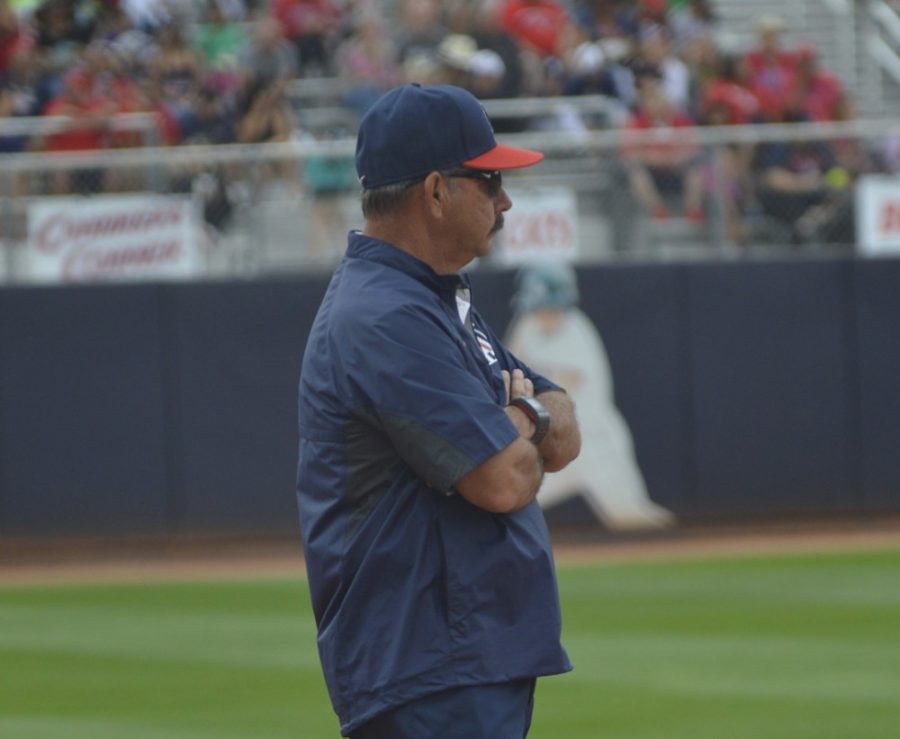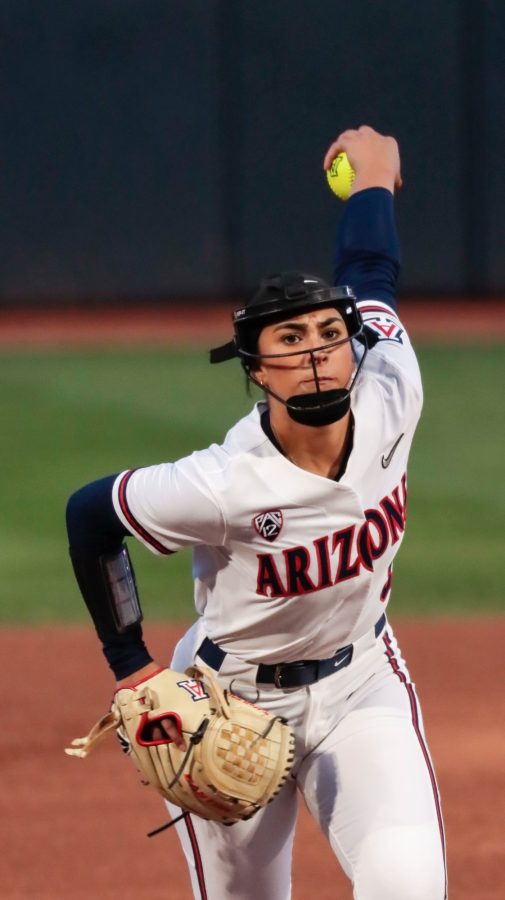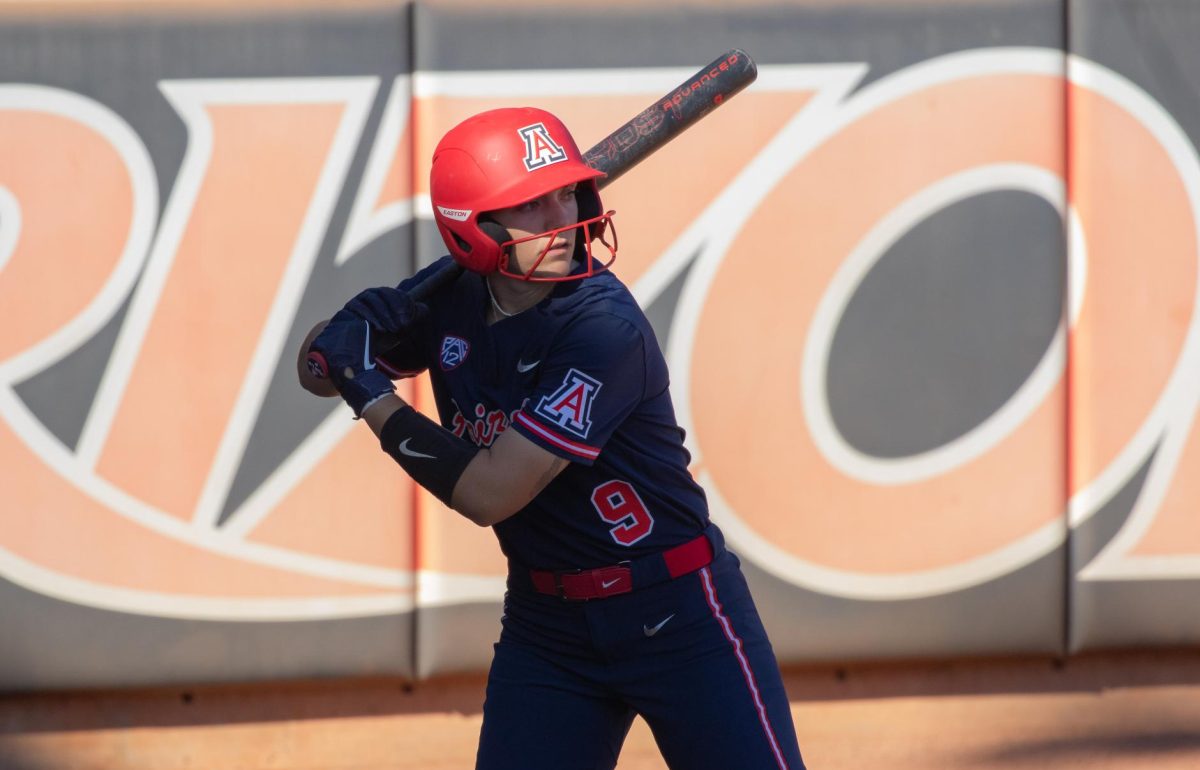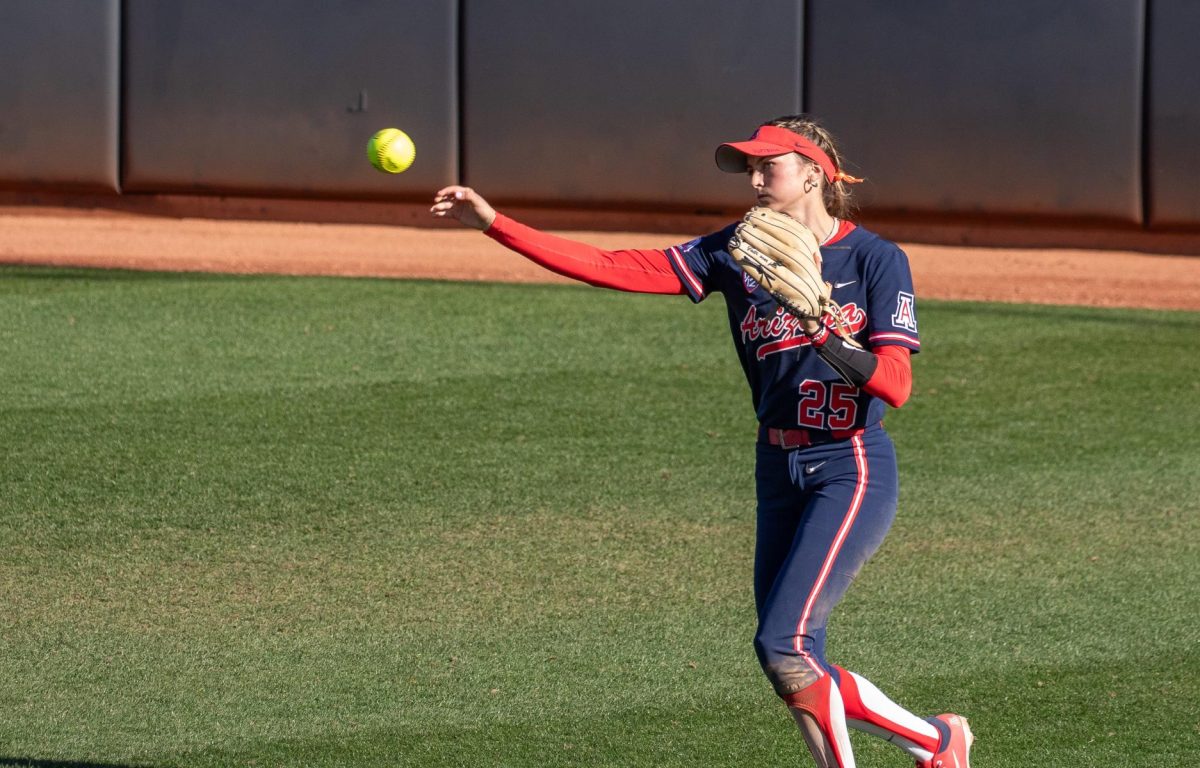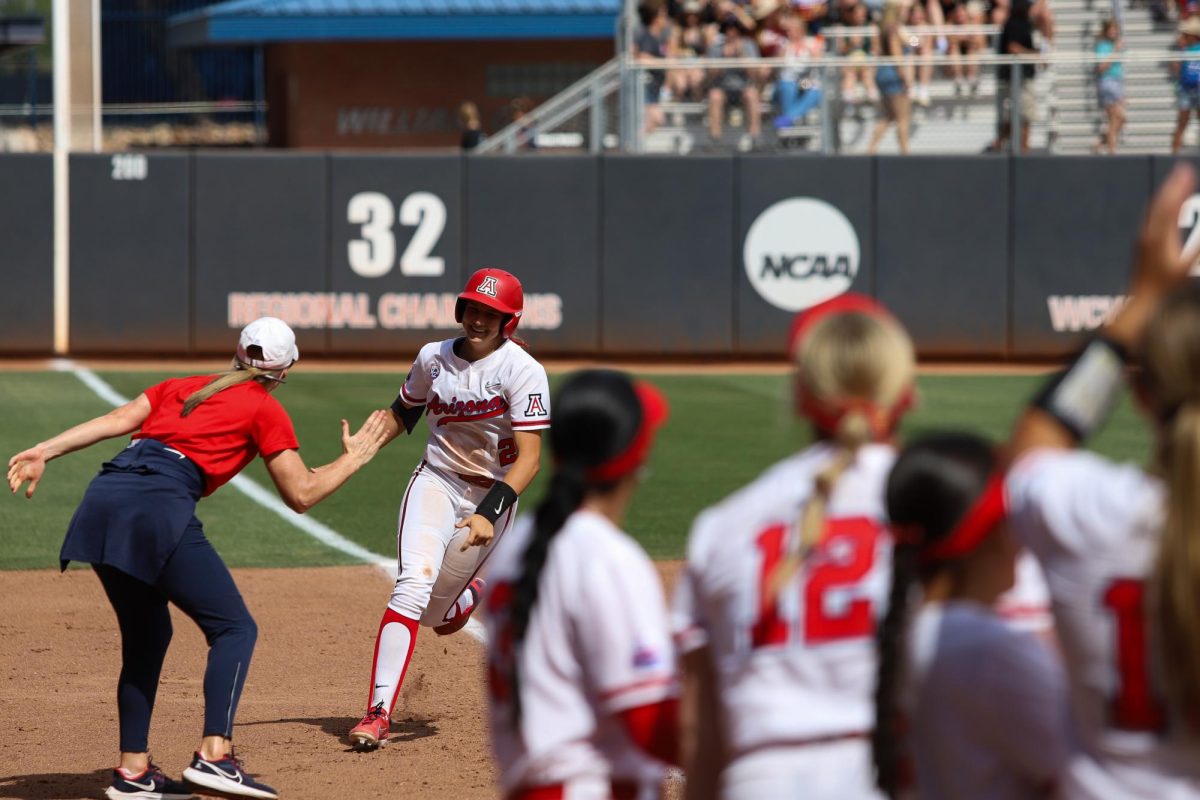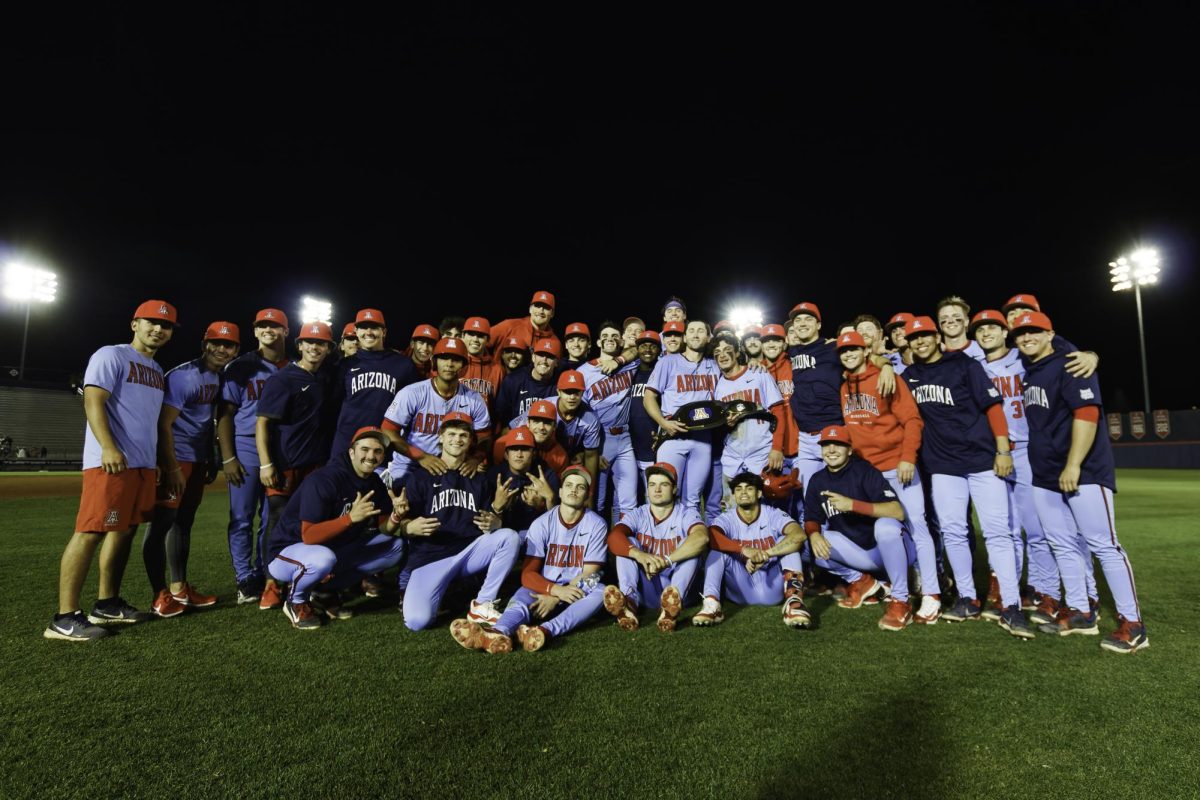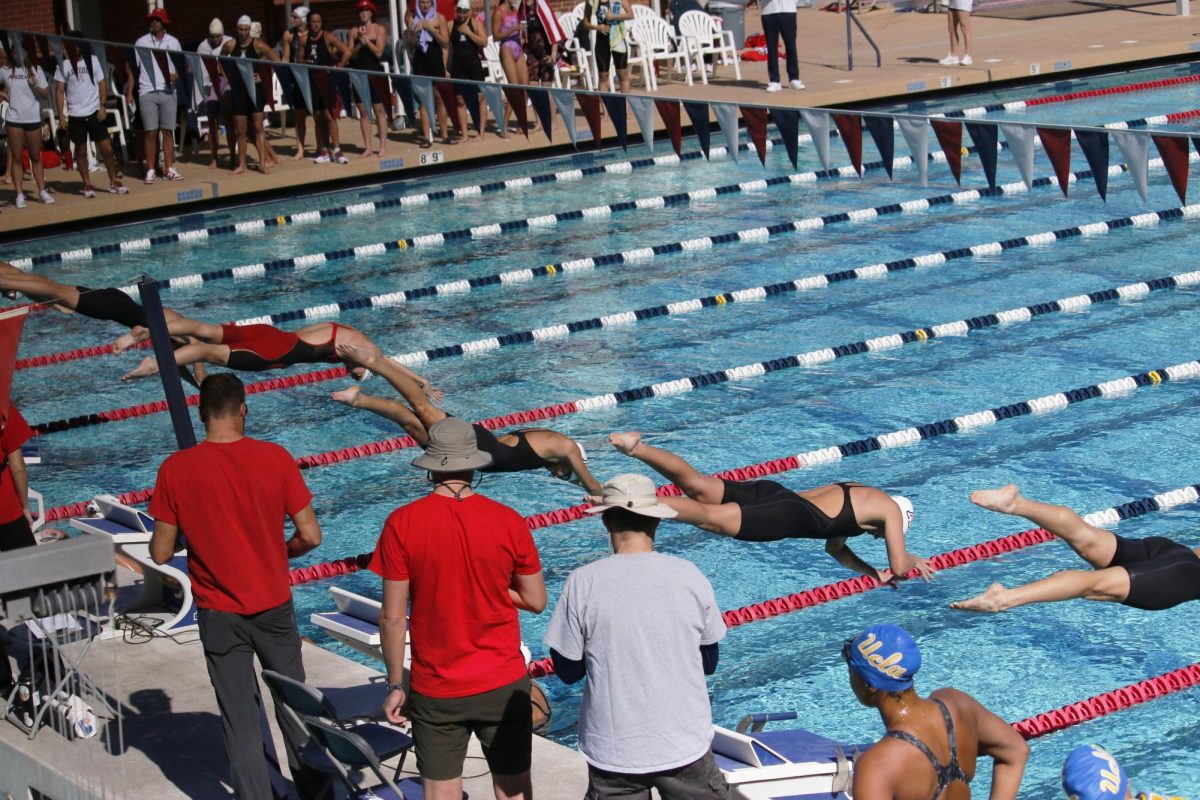
Arizona coach Mike Candrea offered some foreshadowing intuition before Arizona softball traveled to Utah and lost two of three games over the weekend.
“In this league, with the way the hitters are right now, you have to be pretty special to sit out there for seven innings,” Candrea said.
Over the three-game series, not one Wildcat pitcher stayed out on the mound for all seven innings. Not even close.
The longest outing was by Michelle Floyd, who twice made it through 3.2 innings, recording roughly half of Arizona’s outs.
In fact, all three games featured appearances from all three Arizona pitchers — Floyd, Trish Parks and Siera Phillips. The trio combined to allow 20 runs, 18 of them earned.
So long are the days when Candrea could hand the ball over to a Taryne Mowatt or Alicia Hollowell — two Women’s College World Series winning pitchers — and expect a seven inning performance.
In 2003, Hollowell led the UA with 44 starts and 38 complete games. More than three-quarters of the way through the 2015 season, the Arizona staff has produced 19 complete games collectively.
“All over the country you’re seeing more teams that really need a pitching staff than the one or two horses that we used to have,” Candrea said.
That change in mindset is the result of a fundamental shift occurring in the sport of college softball, one that favors offense.
Batters step up to the plate with better equipment, and perhaps more importantly, greater knowledge of their opposition than ever before.
With the increase in streamed and televised games, pitchers no longer enter matchups with a treasure chest of concoctions.
Conference opponents had to face Arizona’s pitchers with nothing more than a cursory understanding of what those hurlers had to offer 10 or 15 years ago.
Nowadays, opposing coaching staffs can digitally video record the UA’s games on Pac-12 Networks, scout each pitcher and enter the series with plenty of familiarity on who they will be facing.
“People know what they’re going to see before they step in the batter’s box,” Candrea said. “You have to be able to adjust on the fly, and you almost have to recreate yourself every year with a new look.”
Rule changes in softball such as moving the mound distance to home plate from 40 to 43 feet also favor the offense.
National pitching and batting trends correlate to the greater emphasis that has been placed on offense.
In 2004, the NCAA average team ERA was 2.62. By the end of the 2014 season, it had risen to 3.72. Over the same 10-year time span, team scoring increased from 3.48 to 4.40 runs per game.
It seems the scoring epidemic has hit the west coast harder than anywhere else.
Last year, Pac-12 Conference teams scored 6.09 runs per game, by far the highest average of any conference.
Through April 16 of this season, three of the nation’s top five hitting teams hail from the Pac-12, led by Arizona with a .373 average.
“I think time will tell whether it’s the state of the game right now or if it’s one moment in time,” Candrea said. “But it’s getting tougher. Hitters are definitely getting better.”
_______________
Follow Ezra Amacher on Twitter.



